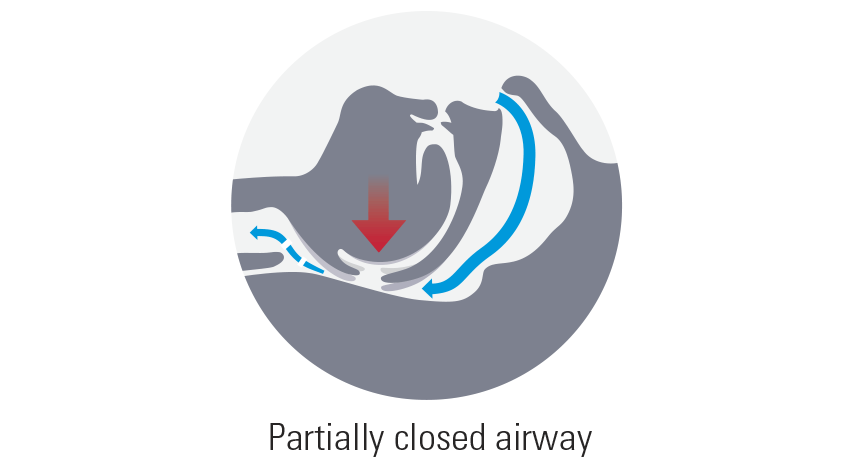Types of sleep apnea

Notes from Dr. Norman Blumenstock
There are three types of sleep apnea.
There are three main types of sleep apnea:
- Obstructive sleep apnea (OSA)
- Central sleep apnea (CSA)
- Mixed sleep apnea
-
Obstructive sleep apnea (OSA)
Obstructive sleep apnea is the most common type of sleep apnea, making up 84% of sleep apnea diagnoses.1 In most cases of obstructive sleep apnea, air stops flowing to the lungs because of a blockage (or obstruction) in the upper airway—that is, in the nose or throat.The upper airway could become blocked due to:
In most cases of obstructive sleep apnea, air stops flowing to the lungs because of a blockage (or obstruction) in the upper airway—that is, in the nose or throat.The upper airway could become blocked due to:- the muscles relaxing too much during sleep, which blocks sufficient air from getting through*
- the weight of your neck narrowing the airway
- inflamed tonsils, or other temporary reasons
- structural reasons, like the shape of the nose, neck or jaw
* This narrow airway causes a vibration in your throat, which creates the sound of snoring.Central sleep apnea (CSA)
Central sleep apnea (CSA) is the least prevalent type of sleep apnea,1 and can be caused by heart failure, or a disease or injury involving the brain, such as:- stroke
- brain tumor
- viral brain infection
- chronic respiratory disease
In some cases, the airway is actually open but air stops flowing to the lungs because no effort is made to breathe. This is basically because the communication between the brain and the body has been lost, so the automatic action of breathing stops.Those with CSA don’t often snore, so the condition sometimes goes unnoticed.Mixed sleep apnea
This is a mixture of both obstructive sleep apnea OSA (where there is a blockage or obstruction in the upper airway) and CSA (where no effort is made to breathe), and is the least common type of sleep apnea. Your doctor can help you understand more about this if you need to.If you have any concerns that you may have any type of sleep apnea, please consult your doctor.




